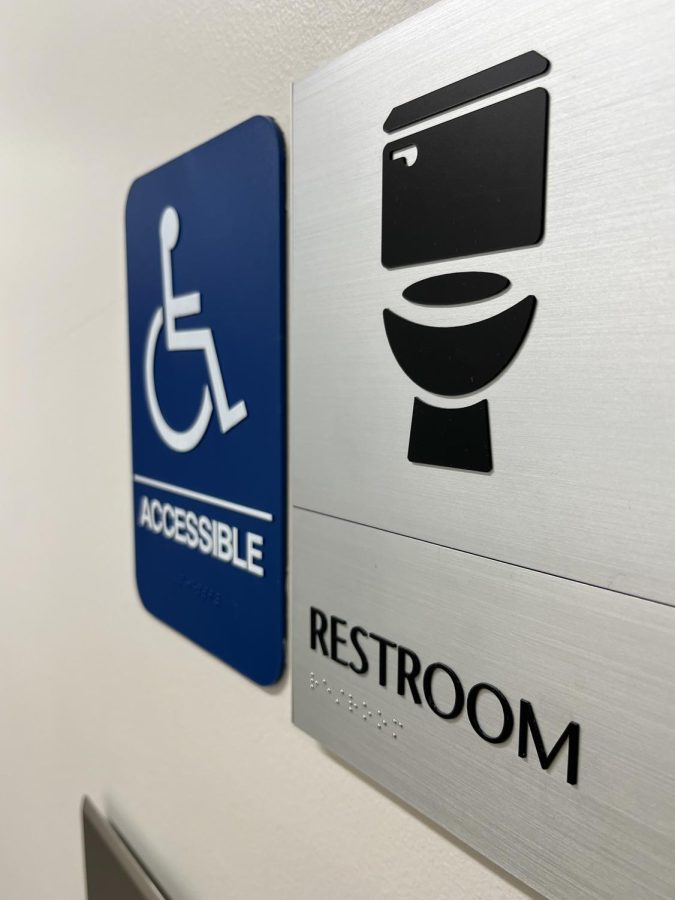All-gender signs lead to greater acceptance toward transgender, nonbinary people
WSU and other researchers collaborated on an online experiment to test how gendered signs affected adolescents’ attitudes toward gender.
The biggest barrier with implementing more gender neutral bathrooms at WSU is cost.
January 26, 2023
Seeing an all-gender sign for a restroom or locker room can increase adolescents’ acceptance of transgender and non-binary people, according to research
Traci Gillig (they/she), assistant professor at the Edward R. Murrow College of Communication, said that the experiment was done in a virtual school setting with adolescents ages 12-17.
During a virtual day at school, students made various decisions throughout the virtual day, Gillig said. Some of the decisions were related to the locker rooms and restrooms, while others were not related.
The students were randomly assigned either to all-gender restrooms and locker rooms or gender-segregated restrooms and locker rooms, they said. After going through the scenario, students’ attitudes toward transgender and non-binary people as well as how the students conceptualize gender were measured.
The study found that the youth who were in the gender-segregated scenario was more likely to conceptualize gender as binary while those with the all-gender condition were more likely to view other identities as valid, Gillig said.
“We saw that exposure to facilities influenced how they thought about or how they understood gender,” they said. “And then we also looked at youth’s prior exposure to all-gender facilities. And we found that the more youth had encountered all-gender facilities before the study in their everyday lives, the more comfortable they were with those facilities and the more positive attitudes they had towards trans and non-binary people.”
While the study was virtual, it was made to be as representative as possible of a typical school, Gillig said, and the study can be generalized to the U.S. population of youth. The results of the study support that all-gender restrooms and locker rooms will help youth to widen their understanding of gender identity.

Josie Cohen-Rodriguez (she/they), LGBTQ+ student life and community coordinator, said that she has faced difficulties in finding a restroom at her previous position at the university.
“I used to work in Todd Hall and I used to have to leave my building and go to Johnson Tower to find a restroom that I felt safe and comfortable using,” Cohen-Rodriguez said. “And that wasn’t a whole lot of fun, but it was nice to have the option. But it was, I think, unfortunate that one of the largest buildings with some of the largest classrooms that we have on campus didn’t have options available to students.”
The biggest barrier to implementing more gender-neutral restrooms is cost, Cohen-Rodriguez said. There are costs related to retrofitting the existing restrooms to convert current bathrooms to gender-neutral bathrooms.
She said that there is no funding for gender-neutral bathrooms and prioritizing spending to support those student populations is an area that WSU could improve on.
“Right now, there’s not a whole lot of options. And to find gender-inclusive restrooms, you have to kind of have to search for them, and it’s really hard to find them sometimes,” Cohen-Rodriguez said. “I think what I would be really happy to see and where I would want to see us in the next few years is just having an option in every building.”
Gillig said that WSU has taken an effort to have more of an emphasis on inclusive spaces and create communities that are inclusive. In class, they said that they have seen a range of gender-diverse students from those who are comfortable and open in their identity to those who are not yet able to be out in everyday life.










